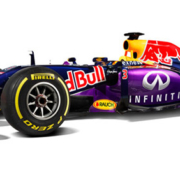Australian GP – THE POINT… by Gian Carlo Minardi
In Melbourne it happened just the opposite of what we could expect. In fifteen days, Formula 1 has been capable to overturn any kind of forecast.
We saw a podium made of three pilots belonging to as many teams: Mercedes, Red Bull and McLaren. The only confirmation came just from Mercedes – as a team and engine manufacturer – which affirmed itself to the top.
The W05 of Hamilton and Rosberg confirmed the supremacy both in the single qualifying lap and in the long run, and – much to the benefit of the others – with some reliability lacks. Otherwise they would have scored a double-declutch.
Great comeback for Red Bull, which reveals as the car with the best aerodynamic downforce, even if it suffers the handicap related to the Renault power-unit. Jenson Button’s words during the first tests in Bahrain have been validated by facts. Once the engine issues are overcome, it will be hard to hold them back. On the other hand, the World Champion Sebastian Vettel was let down by that control unit that was able to make the difference just last year.
A rebirth for Mclaren, which perhaps has found in Kevin Magnussen the new Hamilton, with a podium on the day of his debut and a fourth place for Button. A hint of bad luck kept Williams away from a good result: at the green lights Felipe Massa was hit from Kobayashi, at his return in F1, whereas Bottas made a mistake probably caused by an excessive strength in transmitting the power to the road.
Toro Rosso deserves to be praised, as they were able to have both cars scoring points. A great result, if we consider that it sprang not from others’ faults but, on the contrary, has been well achieved on the race track. Good performance also for Force India with Hulkenberg, a little worse with Perez: Nico is a great pilot, no doubt.
Now it can be useful to analyse the lap times to have a better understanding of the real gap separating the teams’ performance. Rosberg’s Mercedes has been steadily around 1’32’’-1’33’’ low, whereas all other pilots drove around 1’34’’. Just towards the end Fernando Alonso (fifth at finish) drove around 1’32’’ low, getting close to the fastest race lap set by Rosberg (1’32’’478). Surely an encouraging result, even though a correct interpretation is not straightforward: we should know the data about fuel consumption and strategies too. In the current season the learning curve of teams will be very high: therefore, after each race, we can expect substantial evolutions and important adjustments.
Even Lotus, after closing the first race of the season with two retirements, has been able to gain an experience thanks to the number of driven kilometres during the whole week-end, gathering important data to investigate and find a solution to the problems annoying the transalpine power-unit and the E22.
Mercedes plays the fox of the race, while Ferrari, both as car and engine, is the second force. When RB fully exploits the Renault power, it will be hard to keep the pace. The season kick-start has proved how hard is the dialogue of the 15 control units, but the progresses of the teams with a Renault engine show that these operations can be done indoor as well.
The Gap can thus be reduced.
Important note: this analysis has been done straight after the finish of the race.



